Best Portable External Hard Drive for Travel
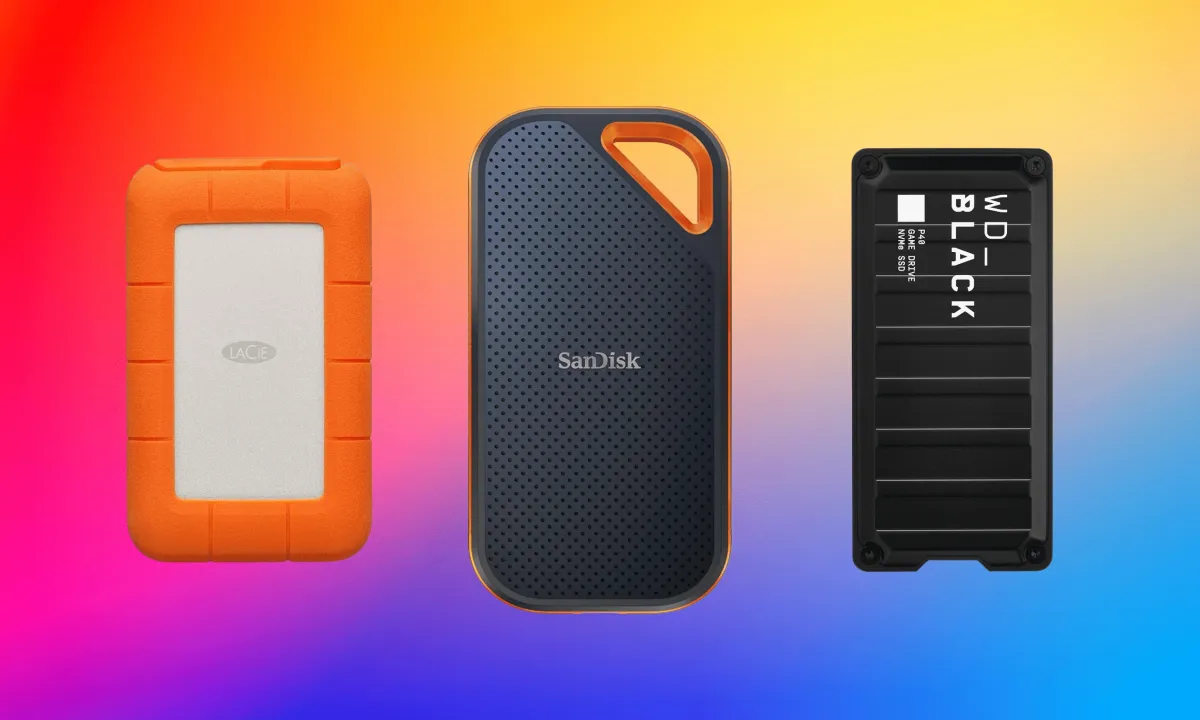
I'm on my fifth external hard drive, and I’ve personally tested dozens of different types, brands, and capacities.
From the old-school, AC-powered HDD to the ultra-portable SSD – I’ve used them all as an essential part of my digital nomad setup to store website copies, personal files like travel photos and videos, or create PC backups.
In this article, I’ll guide you through the top external hard drives that are portable enough to bring them with you while traveling. I'll share the key features, the pros, cons, and what they are best for.
1. SanDisk Extreme Portable SSD
Best Overall
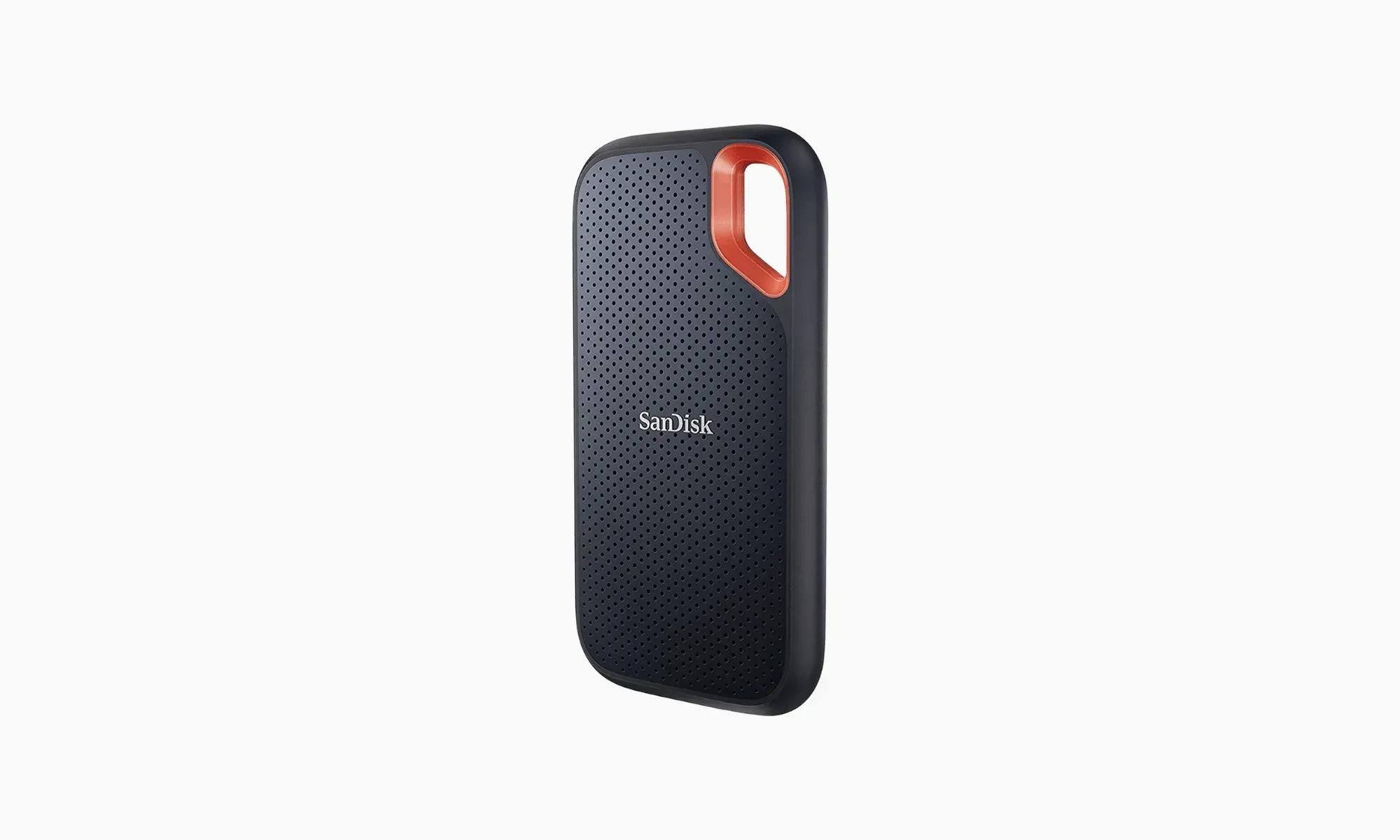
Features
- Capacity: 500 GB, 1 TB, 2 TB & 4 TB
- Dimensions & Weight: 0.38 x 2.07 x 3.97 inches, 1.76 ounces
- Interface: USB 3.2
- Durability: IP65 water and dust resistance, drop protection up to 3 meters
- Special Features: Handy carabineer loop, password protection, reddot winner 2021
The ultra-portable external hard drive is perfect for full-time travelers. It measures just 0.38 x 2.07 x 3.97 inches and weighs only 1.76 ounces, which makes it portable enough to bring it easily anywhere with you.
It even has a handy carabineer loop to attach the drive to your keys and it's available in 500 GB, 1 TB, 2 TB & 4 TB, offering enough options for your travel's storage needs.
I personally use the 1 TB drive as an amateur travel photographer and think it’s honestly the best external hard drive for travel photography you can get your hands on.
2. LaCie Rugged Mini
Best for Durability
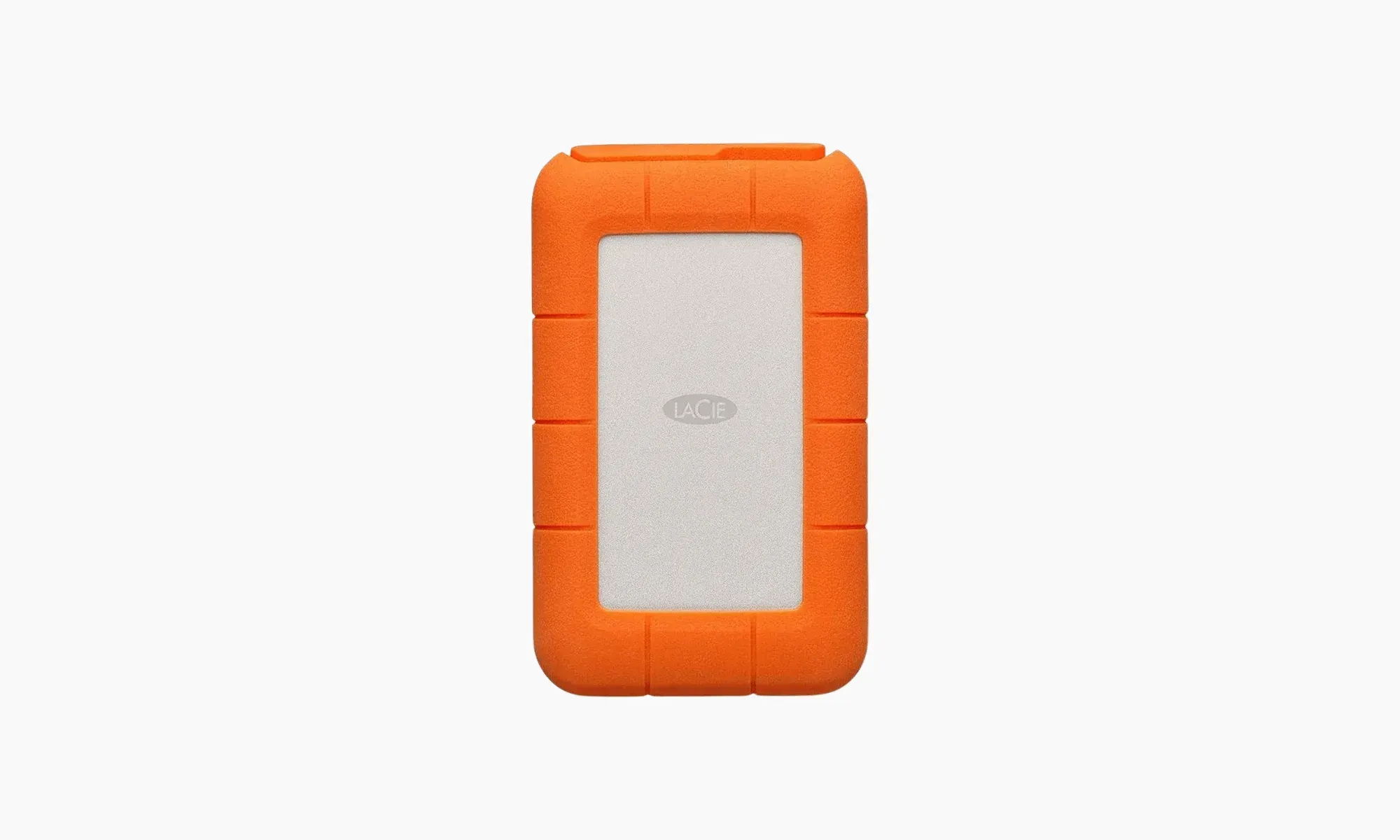
Features
- Capacity: 1 TB, 2 TB, 4 TB & 5 TB
- Dimensions & Weight: 1.02 x 3.39 x 5.32 inches, 3.52 ounces
- Interface: USB 3.2
- Durability: Drop, rain, dust, and crush resistant
- Special Features: Encrypted drives for extra protection
LaCie Rugged Mini has gained popularity among adventure travelers and digital nomads alike. It's a rugged external hard drive that we find perfect for high-action content creators.
Unlike most portable hard drives on our list, the Rugged Mini is an HDD rather than an SSD, which helps keep the cost down. But like anything, this is a trade-off as this also limits performance. The maximum transfer speed you can expect is 130 MB/s, which is significantly slower than the SanDisk Extreme’s 1050 MB/s read/write speeds, for example.
The rugged build is designed to withstand the wear and tear that comes with travel, and its compact size of 1.02 x 3.39 x 5.32 inches and 3.52 ounces makes it very small and highly portable (this is something we really like). This hard drive is available in 1 TB, 2 TB, 4 TB & 5 TB capacities, although I would recommend 1 to 2 TB for most users. For larger storage needs, you can still consider upgrading to the LaCie SSD Pro if you wish.
3. SanDisk PRO Extreme Portable SSD
Best for Fast Transfer Speed
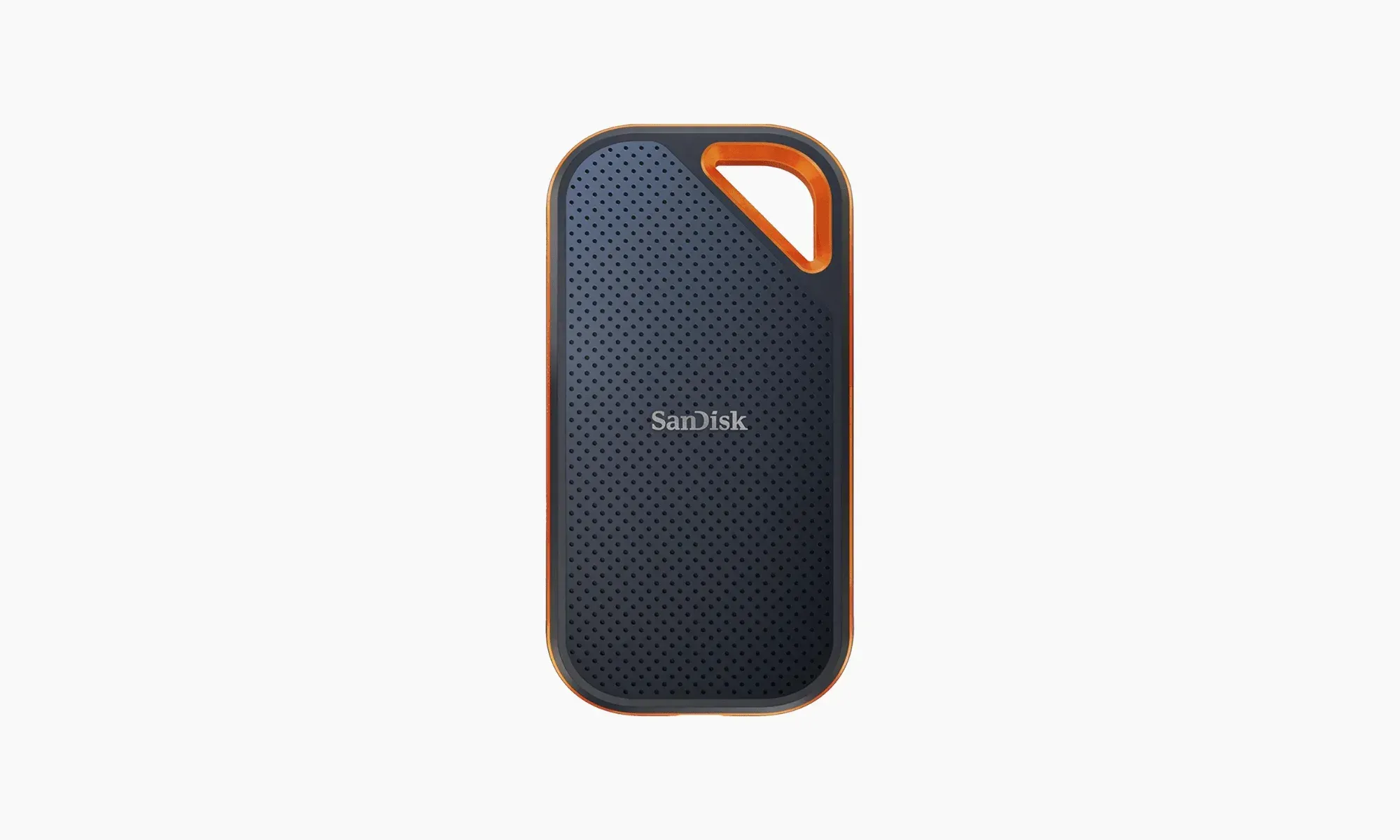
Features
- Capacity: 1 TB, 2 TB & 4 TB
- Dimensions & Weight: 0.41 x 2.28 x 4.36 inches, 2.72 ounces
- Interface: USB 3.2
- Durability: IP65 water and dust resistance, drop protection up to 3 meters
- Special Features: Handy carabineer loop, password protection
The SanDisk PRO Extreme Portable SSD is our best pick for travel external hard drive users who are looking for faster transfer speeds.
Not to be confused with the SanDisk Extreme Portable SSD, the PRO version offers a similar spec sheet with dramatically improved performance.
Instead of the 1050MB/s that you’ll get with the Extreme, the PRO offers a huge 2000MB/s of read/write transfer speeds. It may be overkill for most travelers, but if you’re a videographer or work with large (multiple GB) file sizes, it may be worth the upgrade in my opinion.
The same tough, highly durable, and incredibly portable benefits still apply. There is a marginal increase in both the size and the weight, but it’s barely noticeable. If you’re looking for the best of the best in terms of speed performance, it’s the SanDisk PRO Extreme Portable SSD.
4. SAMSUNG T7 Shield 4TB
Best for High Capacity
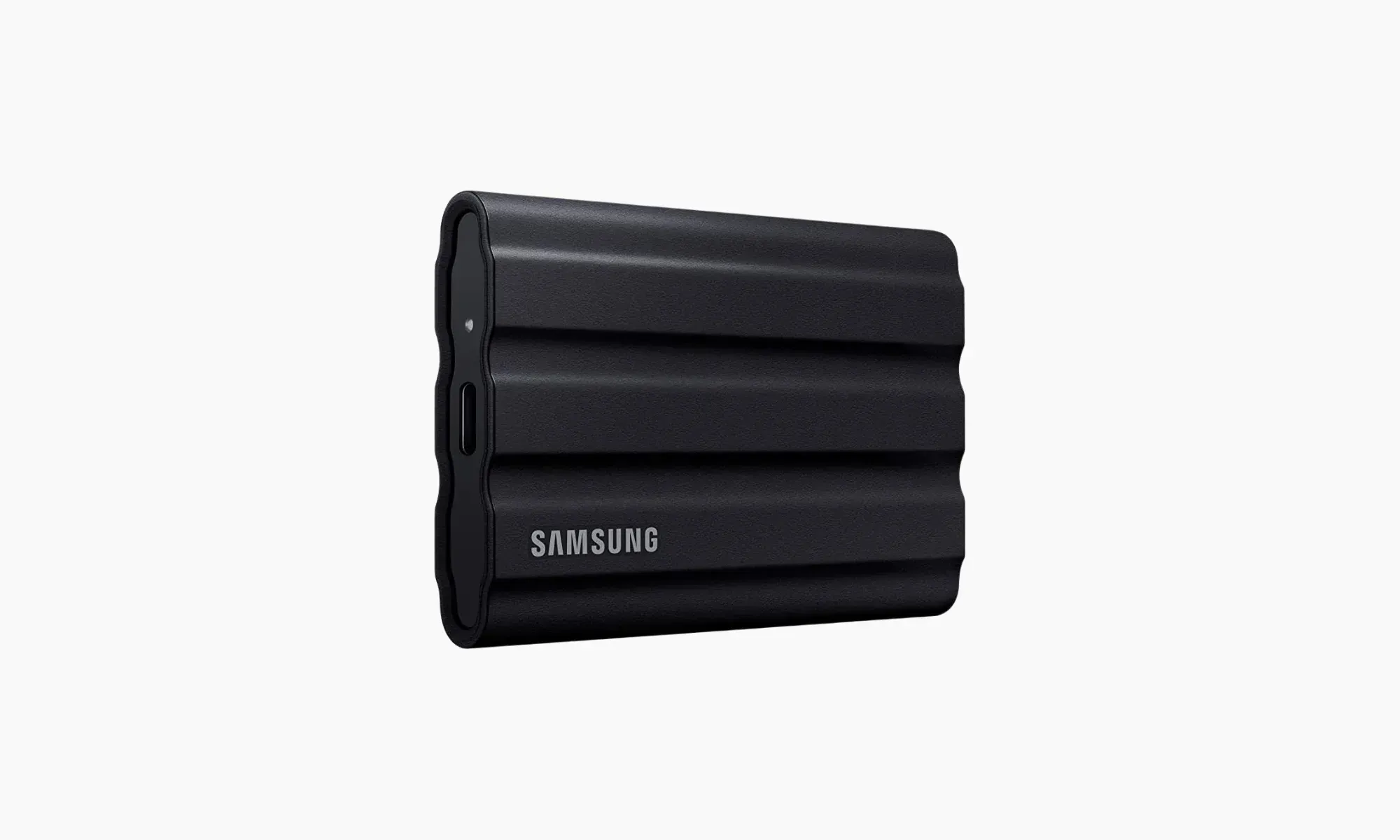
Features
- Capacity: 1 TB, 2 TB & 4 TB
- Dimensions & Weight: 3.39 x 2.24 x 0.49 inches, 3.42 ounces
- Interface: USB 3.2
- Durability: IP65 rating for water and dust resistance, dynamic thermal guard, advanced outer elastomer
- Special Features: 1,050 MB/s transfer speed, 3m drop-tested
The SAMSUNG T7 Shield is an incredibly high-quality and high-capacity portable hard drive for international travelers. It's available in 1 TB, 2 TB, and 4 TB and I find it to be best suitable for content creators with a focus on photography and videography.
Similar to the SanDisk Extreme, there’s a lightning-fast 1050MB/s transfer speed and IP65 water and dust resistance.
The rugged exterior – available in several colors (Black, Blue, and Beige) – is drop-tested to 3 meters, matching the SanDisk Extreme’s performance metrics across the board. There’s only one major downside to the hard drive and that lies in the reformatting requirements for MacOS devices.
5. Western Digital Elements
Best for Back-ups

Features
- Capacity: 6 TB to 22 TB
- Dimensions & Weight: 5.31 x 1.89 x 6.53 inches, 1.98 pounds
- Interface: USB 3.0
- Durability: N/A
- Special Features: USB 3.0 and 2.0 compatibility
The Western Digital Elements Desktop differs somewhat compared to the other external hard drives listed when trying it. Not only is this one of only two HDDs, but it’s the only external hard drive that requires mains power.
But there’s a sensible reason for both of those.
This isn’t your “take anywhere and everywhere device”, this is your “keep at home” hard drive that always stays in a safe location.
That may sound counter-productive, especially for frequent travelers. But hard drives can corrupt and only keeping single copies is a surefire way to meet disappointment in the long term. I always recommend making multiple copies (especially of digital photographs) so that corruption doesn’t result in memories that are lost forever.
Alongside a portable SSD as part of your portable office setup, a high-capacity HDD like the Western Digital Elements Desktop (it has a huge 22 TB!), is a great way to keep everything safe and secure.
6. Western Digital P40 Game Drive SSD
Best for Gaming On The Go
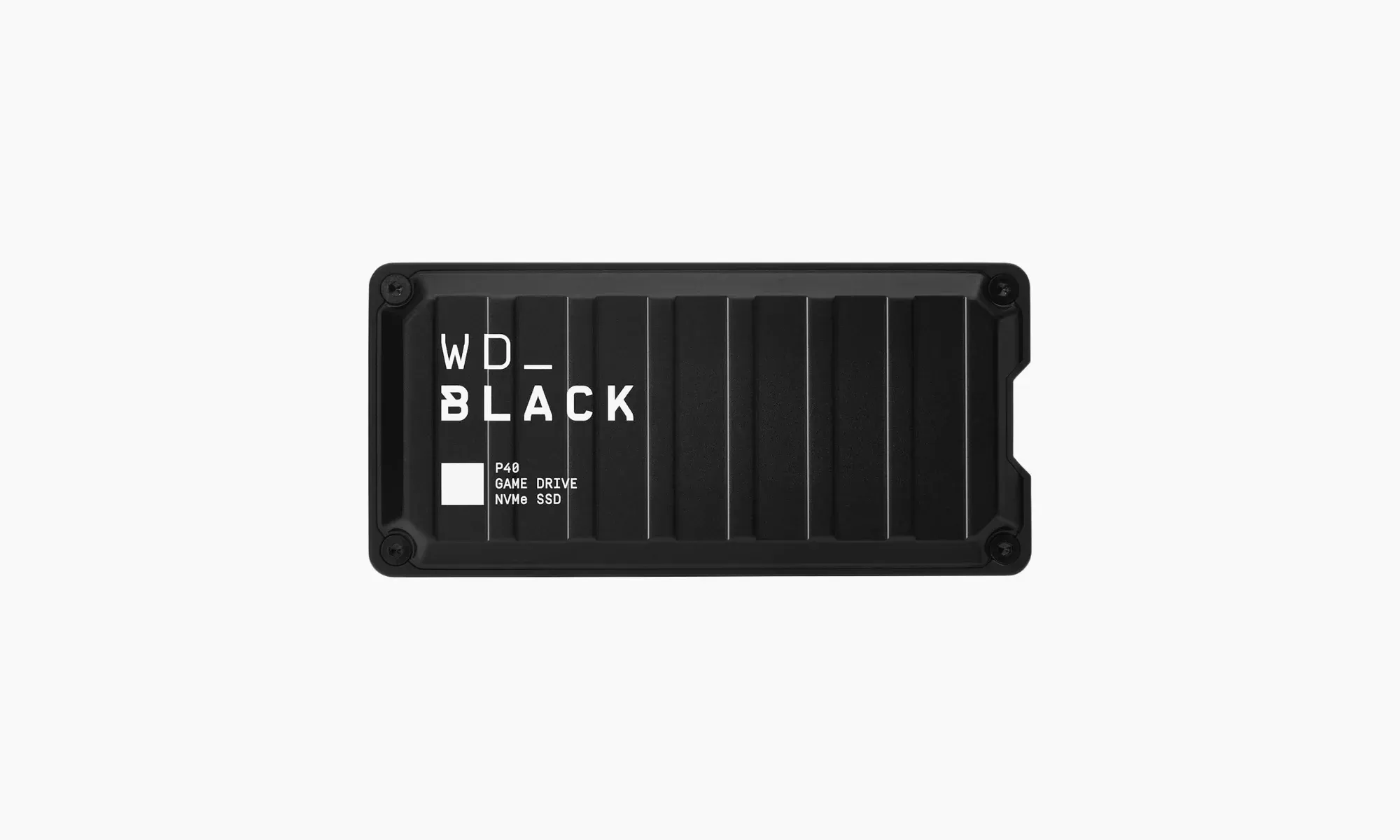
Features
- Capacity: 500 GB - 2 TB
- Dimensions & Weight: 4.21 x 2 x 0.51 inches, 2.72 ounces
- Interface: USB 3.1
- Durability: Shock-resistant structure
- Special Features: Customizable RGB Lighting
Gaming on the go is always a bit of a headache, but using a high-speed SSD like the Western Digital P40 Game Drive can make that process just a little bit smoother.
The hard drive offers a shock-resistant structure and lightning-fast speeds up to 2,000MB/s. There’s compatibility offered on PC and Mac as well as PlayStation and Xbox. If you’re lucky enough to travel with a console (and you have that extra space in your backpack), you should definitely consider the Western Digital P40.
How To Choose the Right Travel Hard Drive
Consider durability
When you're traveling, durability is a critical factor to consider for your external hard drive. It's not just about losing the device in an accident—like dropping it, submerging it, or misplacing it—but also about the potential loss of irreplaceable files, photos, and videos. That's a risk you probably don't want to take. So, what should you look for? Hard drives that are dust and water-resistant, drop-tested, and shockproof are the way to go. The sturdier the build, the less you'll have to worry about corrupted files due to unexpected mishaps.
Opt for a compact size and lightweight design
The size and weight of external hard drives have decreased significantly over the past decade—great news for travelers and digital nomads. With devices like the SanDisk Extreme, you can now store up to 4 TB of data on a drive that fits comfortably in the palm of your hand. This level of portability means less bulk in your bag and more convenience on the go. We've prioritized these small, lightweight devices in our recommendations to ensure you get maximum storage without the added heft.
Assess your storage capacity needs
External hard drives come in various storage capacities, typically ranging from 500 GB to 5 TB. For most users, a 1 TB drive provides ample space for backing up data and storing photos and videos. However, if you're working with large files like HD videos or high-resolution images, you might find yourself needing more room. In that case, opting for a larger capacity drive ensures you won't run out of space when you need it most.
Prioritize connection type and transfer speed
The transfer speed is a crucial performance metric when choosing an external hard drive. High-end models offer speeds up to 2000 MB/s, but for most of us, that's more than necessary. A rate of around 1000 MB/s is more than fast enough and is commonly found in popular SSDs. Just how much faster is that? At these speeds, you can move gigabytes of data—say, a 4 GB feature-length film or a year's worth of travel photos—in seconds rather than minutes. Faster speeds not only save you time but also make the whole process of backing up your data easier. Plus, for laptops designed for digital nomads, pairing them with a fast SSD can significantly improve your workflow and data management while traveling.
Traveling with External Hard Drives: FAQs
SSDs vs. HDDs: Which One Should You Get?
Solid State Drives (SSDs) offer several benefits over Hard Disk Drives (HDDs). The devices are faster, smaller, and more rugged than their outdated counterparts. However, SSDs are more expensive and often only offered in smaller capacity sizes.
If the budget allows, invest in one of each.
An SSD makes for a fantastic “working drive” (the drive you travel with) and an HDD is best for storage (a hard drive that stores all backups and stays safely in one location). You can never have too many backups while traveling, especially if you are a remote professional who works with large amounts of data and doesn't want to store them in the cloud.
Some professionals also choose tablets as versatile tools for managing backups and working on the go, especially when paired with portable SSDs.
Can You Take a Hard Drive on a Plane?
Yes, you absolutely can. Bringing your hard drive on a plane is generally hassle-free.
Both solid-state drives (SSDs) and traditional hard disk drives (HDDs) are allowed in carry-on and checked luggage. However, it's a good idea to keep it in your carry-on bag to avoid the rough handling that checked baggage often endures.
Can Hard Drives Go Through Airport Security?
Rest assured, that X-ray machines at airports and airport security scanners also won't damage your hard drive or the data stored on it. Unlike older storage media like floppy disks, modern hard drives are unaffected by the low-level radiation emitted by these scanners.
In fact, SSDs are even less susceptible because they have no moving parts and store data on flash memory cells—similar to your smartphone. HDDs, which use magnetic platters, are also safe since the scanners' magnetism is too weak to cause any damage.
Generally speaking, you can pass through airport security without worrying about data loss or corruption. Just make sure your hard drive is easily accessible, as security might ask you to remove larger electronic devices during screening. Keeping it in your carry-on also reduces the risk of it getting lost or damaged, ensuring your important files are safe and ready to use at your destination.
Ready To Add a Portable External Hard Drive to Your Travel Gear?

Join our global
digital nomad community
Join us for free
Freaking Nomads is supported by you. Clicking through our links may earn us a small affiliate commission, and that's what allows us to keep producing free, helpful content. Learn more




 Travel tips, hacks, and news
Travel tips, hacks, and news Exclusive travel discounts
Exclusive travel discounts Offers and promotions
Offers and promotions Digital nomad inspiration
Digital nomad inspiration Latest articles form our blog
Latest articles form our blog